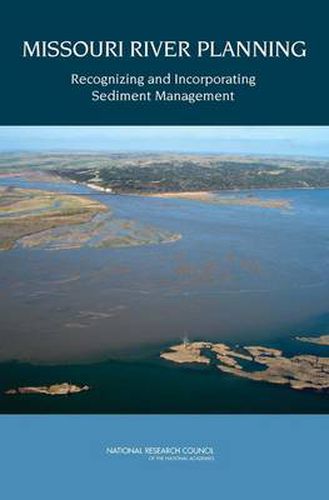Readings Newsletter
Become a Readings Member to make your shopping experience even easier.
Sign in or sign up for free!
You’re not far away from qualifying for FREE standard shipping within Australia
You’ve qualified for FREE standard shipping within Australia
The cart is loading…






Historically, the flow of sediment in the Missouri River has been as important as the flow of water for a variety of river functions. The sediment has helped form a dynamic network of islands, sandbars, and floodplains, and provided habitats for native species. Further downstream, sediment transported by the Missouri and Mississippi Rivers has helped build and sustain the coastal wetlands of the Mississippi River delta. The construction of dams and river bank control structures on the Missouri River and its tributaries, however, has markedly reduced the volume of sediment transported by the river. These projects have had several ecological impacts, most notably on some native fish and bird species that depended on habitats and landforms created by sediment flow. Missouri River Planning describes the historic role of sediment in the Missouri River, evaluates current habitat restoration strategies, and discusses possible sediment management alternatives. The book finds that a better understanding of the processes of sediment transport, erosion, and deposition in the Missouri River will be useful in furthering river management objectives, such as protection of endangered species and development of water quality standards. –Publisher’s description.
$9.00 standard shipping within Australia
FREE standard shipping within Australia for orders over $100.00
Express & International shipping calculated at checkout
Historically, the flow of sediment in the Missouri River has been as important as the flow of water for a variety of river functions. The sediment has helped form a dynamic network of islands, sandbars, and floodplains, and provided habitats for native species. Further downstream, sediment transported by the Missouri and Mississippi Rivers has helped build and sustain the coastal wetlands of the Mississippi River delta. The construction of dams and river bank control structures on the Missouri River and its tributaries, however, has markedly reduced the volume of sediment transported by the river. These projects have had several ecological impacts, most notably on some native fish and bird species that depended on habitats and landforms created by sediment flow. Missouri River Planning describes the historic role of sediment in the Missouri River, evaluates current habitat restoration strategies, and discusses possible sediment management alternatives. The book finds that a better understanding of the processes of sediment transport, erosion, and deposition in the Missouri River will be useful in furthering river management objectives, such as protection of endangered species and development of water quality standards. –Publisher’s description.